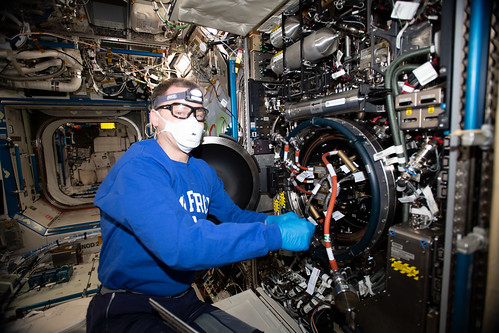Top 20 Automobile Engineer Fresher Interview Questions
Top 20 Automobile Engineer Fresher Interview Questions
Table of Contents
Q1. Tell us about your passion for automobiles and why you chose this career path.
Example – “I’ve been fascinated by automobiles since childhood, and this passion led me to pursue a career in automobile engineering. The blend of innovation, technology, and the opportunity to shape the future of transportation is what drives me.”
Q2. Can you name some prominent automobile manufacturers and their flagship models?
Example – “Certainly, companies like Toyota, Ford, and BMW are well-known. Toyota’s flagship model is the Camry, Ford has the iconic Mustang, and BMW boasts the luxurious 7 Series.”
Q3. How did your educational background prepare you for a career in automobile engineering?
Example – “My engineering degree provided a solid foundation in subjects like thermodynamics, mechanics, and electronics, which are crucial in the automobile industry. Additionally, internships and hands-on projects enhanced my practical skills.”
Q4. Have you pursued any additional courses or certifications related to automobile engineering?
Example – “Yes, I completed a certification in Automotive Design and Manufacturing, which deepened my understanding of vehicle design and production processes.”
Q5. Explain the working principle of an internal combustion engine.
Example – “An internal combustion engine works by igniting a mixture of air and fuel inside a cylinder, creating a controlled explosion that drives a piston, which, in turn, powers the vehicle’s wheels.”
Q6. What is the significance of torque and horsepower in automobile performance?
Example – “Torque is the rotational force that determines a vehicle’s acceleration, while horsepower measures the engine’s overall power output, influencing top speed and performance.”
Q7. Describe a challenging engineering problem you encountered and how you resolved it.
Example – “During a project, we faced a design flaw that affected fuel efficiency. I led a team to analyze the issue, identify solutions, and implement design modifications, ultimately improving fuel efficiency by 15%.”
Q8. How do you prioritize and manage multiple tasks when working on a complex project with tight deadlines?
Example – “I use project management tools to create schedules, allocate resources efficiently, and ensure each task receives the attention it requires.”
Q9. Can you provide an example of a successful team project and your role in it?
Example – “In our university’s SAE Baja team, I collaborated with team members to design and build an off-road vehicle. I was responsible for the suspension system, and our collective efforts led to a top-three finish in a national competition.”
Q10. How do you ensure effective communication within a team of engineers with diverse backgrounds and skills?
Example – “I believe in open and transparent communication, encouraging team members to share ideas and concerns. We maintain alignment through regular meetings and progress reports.”
Q11. Why is safety crucial in the automobile industry, and how do you ensure that your designs comply with safety standards?
Example – “Safety is paramount because it protects both drivers and passengers. I stay updated on safety regulations and conduct rigorous testing to ensure our designs meet or exceed industry standards.”
Q12. Can you explain the concept of emission control in vehicles and its importance?
Example – “Emission control involves reducing harmful pollutants released by vehicles to minimize environmental impact. It’s crucial to meet environmental regulations and reduce our carbon footprint.”
Q13. How do you stay informed about the latest trends and technologies in the automobile industry?
Example – “I regularly follow industry publications, attend conferences, and engage in online forums to stay updated. Continuous learning is essential in this rapidly evolving field.”
Q14. Can you discuss the impact of electric and autonomous vehicles on the future of the automobile industry?
Example – “Electric and autonomous vehicles are poised to revolutionize the industry by reducing emissions and enhancing safety. They stand for the development of eco-friendly transportation.”
Q15. What software tools are you proficient in for automobile design and analysis?
Example – “I’m proficient in CAD software like AutoCAD and SolidWorks for 3D modeling and simulation tools like ANSYS for structural analysis and optimization.”
Q16. How do you integrate computer-aided design (CAD) into the engineering process, and why is it important?
Example – “CAD streamlines the design process, allowing for precise modeling, visualization, and analysis. It reduces errors and saves time during product development.”
Q17. How do you foster creativity and innovation in your engineering projects?
Example – “I encourage brainstorming sessions, cross-functional collaboration, and regular design reviews to explore creative solutions and push the boundaries of innovation.”
Q18. Can you share an example of a unique design or innovation you introduced in a previous project?
Example – “In a recent project, I introduced an aerodynamic-enhancement that reduced drag, resulting in improved fuel efficiency and performance.”
Q19. How do you ensure the quality of your work in automobile engineering projects?
Example – “I implement rigorous quality control processes, including thorough testing and inspections, to identify and rectify any issues before they affect the final product.”
Q20. What measures would you take to maintain quality while adhering to budget constraints in a project?
Example – “I believe in efficient resource allocation, continuous monitoring, and proactive risk management to ensure quality isn’t compromised, even with budget constraints.”




